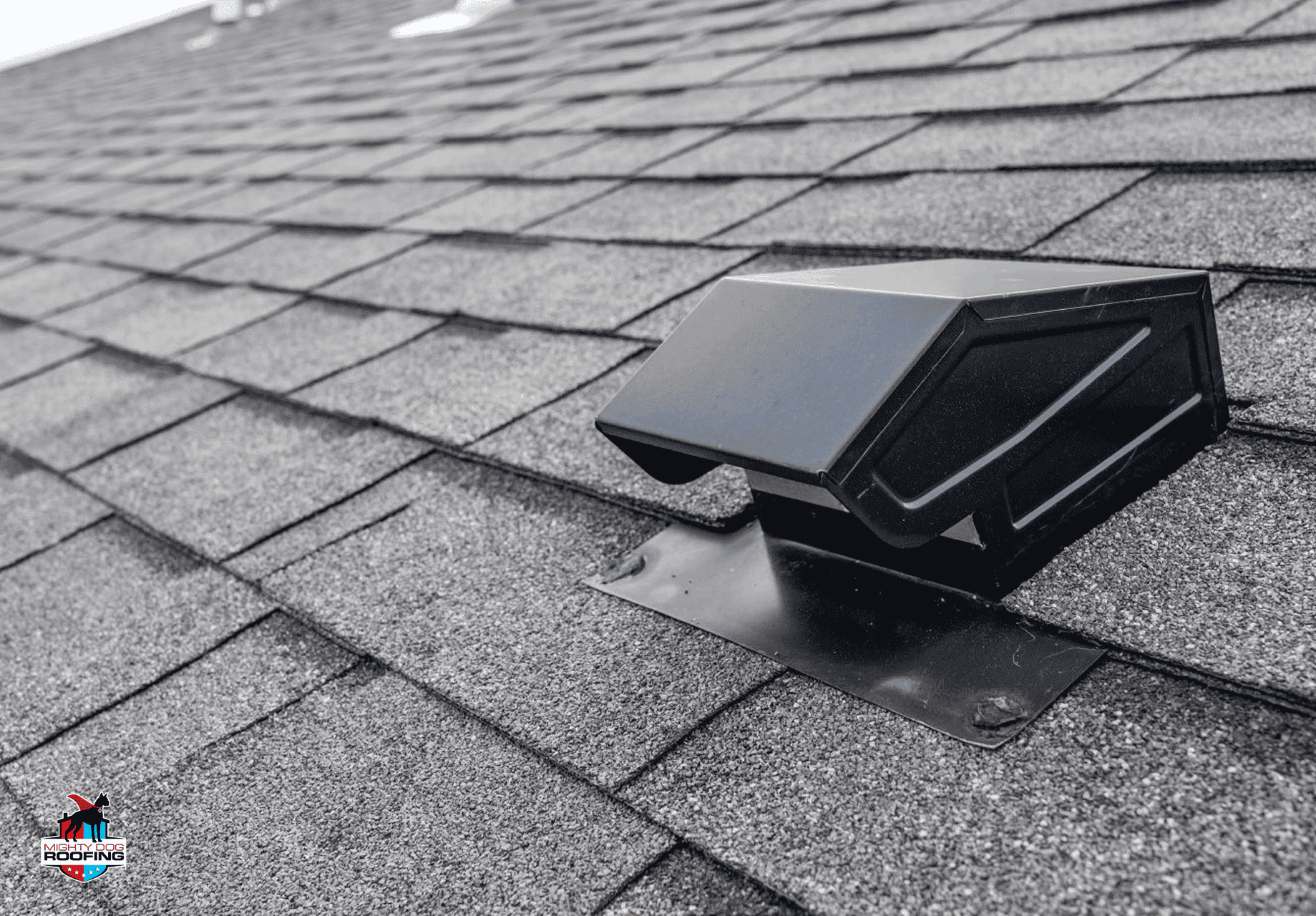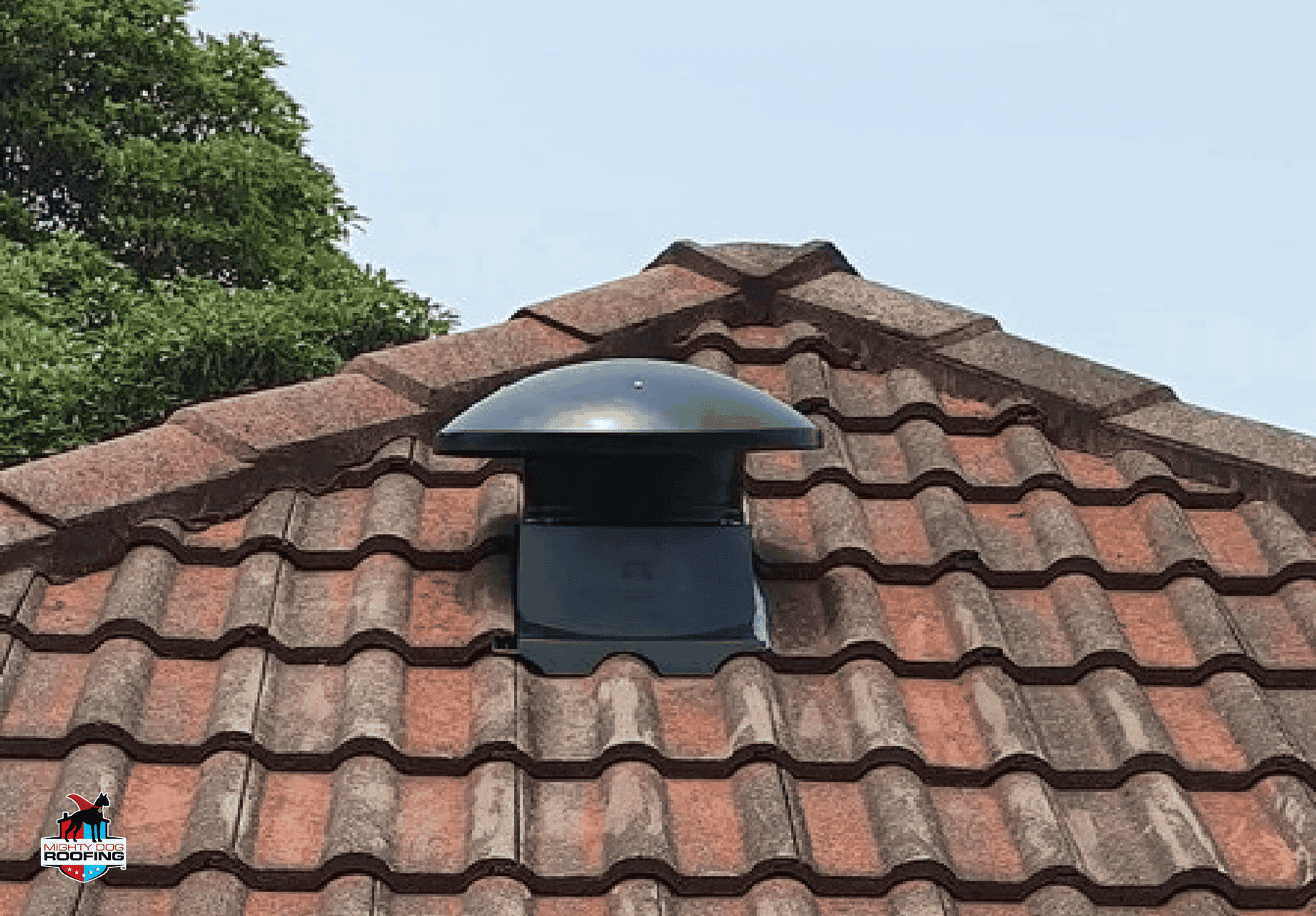The health of your home's ventilation system directly impacts not only your roof's performance but also your overall living comfort in Washington Township. At Mighty Dog Roofing, our comprehensive inspections consistently reveal that effective air circulation significantly extends shingle durability by preventing moisture-related deterioration and heat damage. A well-designed airflow system enhances your home's energy efficiency—cutting cooling expenses by up to 15% during hot summers while preventing destructive ice formations throughout winter months. This crucial equilibrium between air intake and exhaust protects your valuable property investment while ensuring consistent comfort regardless of season.
Understanding Roof Ventilation: The Science of Airflow in Washington Township Homes
Attic ventilation operates through a perpetual circulation process. Fresh air enters via intake points strategically positioned along your home's lower eave areas (soffit vents), naturally warms as it rises through the attic space, and exits through carefully placed exhaust openings at higher elevations (ridge and gable vents) – creating what professionals call the "chimney effect." This balanced ventilation system proves particularly vital in Washington Township's diverse climate conditions, where summer attic temperatures can escalate beyond 150°F and winter conditions frequently create destructive ice dams when accumulated snow undergoes melting and refreezing cycles at the eave edges. Our region's dramatic seasonal transitions make proper attic ventilation an absolute necessity for preventing moisture accumulation.
Common Ventilation Problems in Washington Township Roofing Systems
Our Mighty Dog Roofing inspections throughout Washington Township frequently uncover widespread airflow deficiencies that progressively worsen, eventually resulting in substantial structural deterioration above your living spaces. The fundamental principle centers on maintaining perfect equilibrium between incoming and outgoing air circulation. When this delicate balance becomes disrupted, your home's entire upper framework suffers consequential damage. Common ventilation issues we regularly identify include:
- Insufficient Intake Ventilation: Numerous residences feature adequate exhaust outlets but critically lack proper intake pathways through soffit vents. This imbalance creates negative pressure conditions, significantly hindering effective air movement and natural circulation patterns.
- Blocked Soffit Vents: These crucial openings frequently become obstructed by insulation, multiple paint layers, or accumulated debris. Such clogged passages prevent essential fresh air from entering the upper attic space, disrupting the natural airflow cycle necessary for proper ventilation.
- Competing Ventilation Systems: Some properties incorporate multiple exhaust outlet types (such as combining ridge and gable openings), which can inadvertently short-circuit intended air movement patterns, substantially diminishing overall system efficiency.
- Improper Vent Placement: Incorrectly positioned ventilation components frequently create problematic dead zones with stagnant air, leading to localized moisture accumulation and uneven temperature distribution throughout the upper home area.
- Inadequate Overall Ventilation: Many older Washington Township homes were constructed according to outdated building standards predating modern air circulation requirements, resulting in insufficient airflow capacity for meeting current energy efficiency expectations.
Air flow problems in homes can be detected through various warning signs, including deteriorating shingles near the highest points, warped decking in the upper storage space, moisture marks, unusually hot temperatures in second-floor rooms, and elevated utility costs during summer months. The growth of harmful fungi and ice accumulation during cold months are additional indicators that air circulation may be inadequate. Given the moisture-heavy climate and dramatic seasonal temperature changes, maintaining proper air movement through upper home spaces is essential for property owners to protect their investment.
The Impact of Poor Ventilation on Washington Township Roofs
Insufficient airflow within attic spaces creates significant challenges for Washington Township homeowners. During intensely hot summers, trapped heat exceeding 160°F accumulates above living areas, accelerating shingle degradation through premature granule loss and edge curling – potentially reducing their functional lifespan from an expected 30 years to merely 15 years. This extreme heat concentration forces cooling systems to operate under constant strain, potentially increasing energy consumption and utility bills by up to 20%. Inadequate air circulation allows excess moisture to penetrate critical decking materials, triggering progressive wood deterioration, structural softening, visible discoloration, and potential black mold proliferation. During winter months, escaping interior warmth creates hazardous ice buildup that damages protective coverings and disrupts water drainage systems, often requiring residential gutter installation repairs. Perhaps most concerning for homeowners, these ventilation deficiencies commonly invalidate manufacturer warranties, leaving property owners without critical protection against material defects while facing expensive early replacement costs that could have been entirely avoided with timely professional roof assessment and proper maintenance.
Ventilation Solutions: Options for Washington Township Homeowners

Establishing and maintaining proper airflow throughout your Washington Township home's upper structure represents an essential consideration, particularly given our region's challenging seasonal weather patterns. At Mighty Dog Roofing, our ventilation specialists carefully evaluate each property's unique requirements, thoroughly examining architectural design elements and existing attic circulation systems. Our customized climate control solutions effectively protect your home while simultaneously enhancing its aesthetic appeal, structural integrity, and potentially increasing property value through quality aluminum gutters and complete gutter system benefits.
Comparison of Ventilation Systems for Washington Township Homes
Ventilation Type | Best For | Advantages | Considerations for Washington Township |
Ridge Vents | Most home styles | Provides uniform exhaust along entire roof ridge; low profile; no moving parts | Must be paired with adequate soffit vents; most effective for Washington Township's varied climate |
Soffit Vents | All homes | Excellent intake ventilation; discreet appearance | Must be kept clear of insulation; critical for proper attic airflow in local homes |
Gable Vents | Homes with appropriate gable construction | Good for supplemental ventilation | Less effective in extreme heat; may need to be combined with other systems |
Power Vents | Homes with limited natural ventilation options | Moves large volumes of air; thermostatically controlled | Requires electricity; moving parts need maintenance; excellent for older Washington Township homes |
Solar-Powered Vents | Sunny roof exposures | Energy efficient; reduces carbon footprint | Performance varies with weather; good option for environmentally conscious homeowners |
Our decades of experience in residential roofing demonstrates that combining multiple systems achieves optimal performance. As your dedicated neighborhood specialists serving local communities, we recognize that properties function best when integrating upper and lower access points to maintain ideal circulation in upper spaces throughout all seasons. Drawing on our extensive background meeting the specific requirements of homes in this area, we'll recommend customized solutions that safeguard your investment while enhancing its outward appearance.
Seasonal Ventilation Considerations for Washington Township
The local climate significantly affects attic air circulation needs year-round. Summer demands efficient heat extraction from the upper space (up to 150°F) to lower cooling costs and prevent shingle damage. Winter requires moisture control to prevent condensation and ice dams. We recommend cleaning intake passages in spring, inspecting insulation in fall, and scheduling annual roof inspections. Most residences in our area perform best with balanced ventilation systems that maintain consistent movement through the attic space, effectively managing seasonal challenges without adjustments.
Ventilation and Energy Efficiency in Washington Township Homes
Effective climate control within your attic space directly influences home energy expenses throughout Washington Township. Proper summer airflow through upper areas prevents excessive heat accumulation, potentially reducing cooling costs by 10-12% during peak seasons. Similarly, proper air circulation during winter months works in conjunction with quality insulation to prevent moisture damage while maintaining optimal efficiency. Balance remains crucial—effective air movement manages temperature extremes while proper insulation preserves conditioned air inside living spaces. This integrated approach optimizes home comfort throughout the calendar year while supporting gutter leak prevention through proper moisture control. Based on our extensive experience as a premier roofing contractor, we've consistently observed quality ventilation systems deliver substantial returns through lower energy bills, extended structural lifespans, and noticeably improved indoor comfort levels—representing a truly worthwhile investment for discerning homeowners.
DIY vs. Professional Ventilation Assessment for Washington Township Roofs
Property owners can perform preliminary air circulation evaluations before consulting roofing specialists. Early identification and addressing of ventilation issues helps prevent potentially costly home repairs. While professional assessments utilize specialized airflow measurement tools, these straightforward DIY assessment steps can help evaluate your home's ventilation system effectiveness:
- Visual Inspection of Vents - Check for blockages in soffit openings, peak outlets, and other air pathways. Look for insulation, debris, or nests limiting proper air movement.
- Attic Temperature Assessment - On a warm day, compare the highest floor space and outdoor temperatures. If your top floor is 10-15°F hotter, you likely have insufficient air exchange.
- Moisture Check - Look for dampness, condensation, or mold in your uppermost space, especially on the deck underside, indicating poor air circulation.
- Basic Ventilation Calculation - Top floor square footage ÷ 150 = minimum square feet needed. Divide equally between intake and exhaust points.
While these inspections offer valuable insights, nothing replaces a professional roof inspection. If you notice temperature regulation issues, moisture accumulation, or airflow concerns, contact licensed professionals. Mighty Dog's Washington Township inspection specialists employ cutting-edge methods to assess your home's circulation system and propose improvements that enhance performance and structural longevity.
Schedule Your Washington Township Roof Ventilation Assessment Today

Don't allow inadequate airflow to silently damage your home's critical structural components. Contact Mighty Dog Roofing of South Jersey, your trusted roofing company near you for a comprehensive evaluation of your home's upper ventilation system. Our experienced team thoroughly understands Washington Township's unique climate challenges and provides customized solutions designed to extend your home's functional lifespan, significantly improve energy efficiency, and protect your valuable property investment. Call 856-726-4876 or complete our convenient online form to schedule your professional home improvement assessment today.


